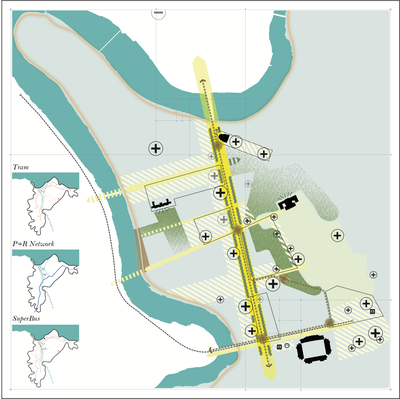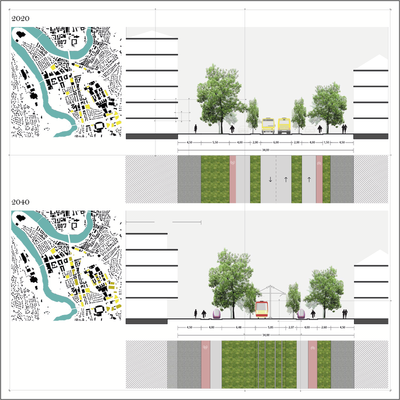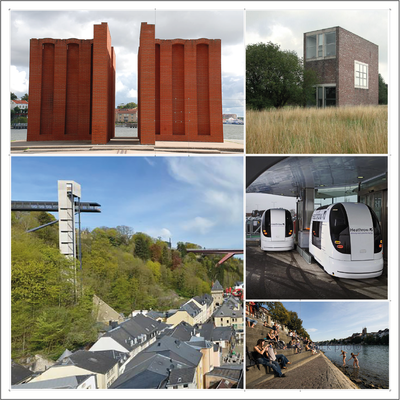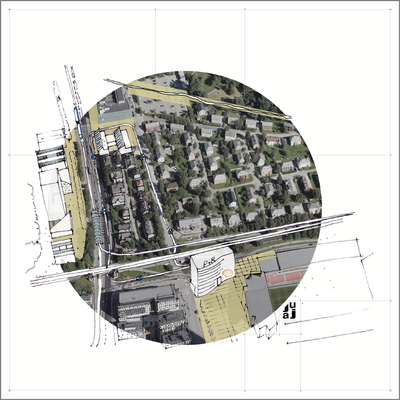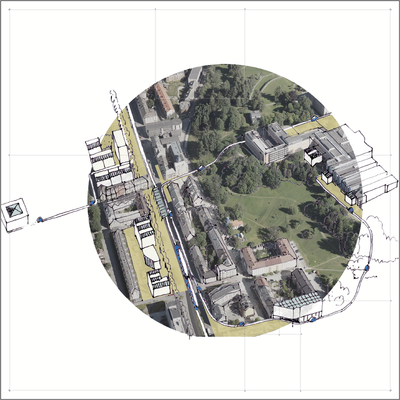The future university campus does not belong outside of the city.
A city itself is a real “living lab”, where you not only learn but live, shop, meet and relax and especially experiment. A living lab, which is not isolated, but is a natural part of the urban fabric where science is flourishing in an environment where inspiration and exchanges take place with all residents of Trondheim.
|
Location: Trondheim, NO
Starting Date: November 2016 Status: COMPLETED Team+: P.SALA, D.LAMBERT, F. vd KLUNDERT (as URBIS) Type: Competition |
By 2025, most European cities, and thus also Trondheim, will be fully driven by car traffic. It is a challenge that requires a solution, especially for Elgesetergate street. Today, this is still a street designed to get to the centre in the fastest possible way. The area is barely benefiting from its stunning location with the quality of the university, green areas and Nidelva River’s beach banks. As isolated islands, these qualities lie around the main street, without even mutual contact. In order to improve the prospects for the whole area, a long-term vision, also in the area of mobility, is highly desirable.
|
In Aesculapius, Elgesetergate is still the main route in the area, but now it is much more focused on pedestrian scale, experience and accessibility. A true city street is the newest development revolving around the tunnel axis, creating a lively area where learning with clear structure, housing, work and recreation finally goes hand in hand and the existing qualities are better reflected. This development will take place in a number of steps, whereby the entire transport system will be rebuilt, meeting and accommodation facilities created or improved, and new developments will contribute to densification also in the east-west direction. This creates a spatial framework that allows great flexibility for development.

